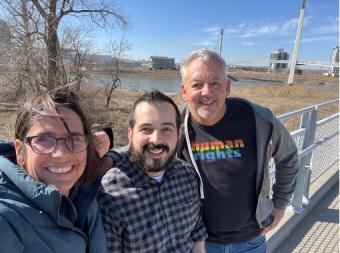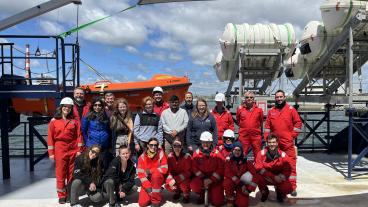Mines professor asks: How can we make upper-division math courses more relevant for future high school teachers?
Deb Carney is co-leading NSF project to create upper-division college elective specifically for prospective math teachers

A Colorado School of Mines professor is part of a team of researchers that recently received National Science Foundation funding for work to improve undergraduate STEM education – particularly for prospective high school math teachers.
Deb Carney, University Distinguished Teaching Professor of Applied Mathematics and Statistics at Mines, will serve as co-principal investigator on the new NSF project, which aims to create a new upper-division college elective that is specifically designed for prospective secondary mathematics teachers.
“There’s a well-documented disconnect between the upper-division mathematics courses currently being offered in college and the needs of prospective secondary school teachers,” Carney said. “With this project, we aim to address that issue and provide more relevant mathematics learning opportunities, thus improving undergraduate STEM education.”
The new course, Inquiry-Oriented Dynamical Systems and Modeling, will focus on some of the big ideas in differential equations – an equation which relates a function to its rate of change – and make connections to secondary mathematics, including ways of engaging in and doing mathematics. Modeling applications will include a variety of environmental, ecological, sustainability and social issues of interest to students. The curriculum will include classroom student tasks, instructor teaching resources and strategies, suggested tools and related material, and recommended norms for discourse.
Principal investigator on the project is Chris Rasmussen, professor of mathematics education at San Diego State University, with Nick Fortune, associate professor of mathematics at Western Kentucky University, also serving as a co-PI.
As part of the project, the researchers will also study the impact of the newly developed curriculum on prospective high school teachers. That includes the knowledge of content intimately connected to high school mathematics, the ways in which they engage in the eight Common Core State Standards for Mathematical Practice, their beliefs about learning and teaching mathematics, and contributions to their emerging professional practices.
Outreach will include workshops at the Mathematical Association of America MathFest and creation of a new working group at the Conference on Research in Undergraduate Mathematics Education on designing and modifying upper-division mathematics courses for prospective secondary teachers.
At Mines, the project will provide an opportunity for two Mines undergraduate students and one Mines graduate student to work as research assistants, Carney said.




